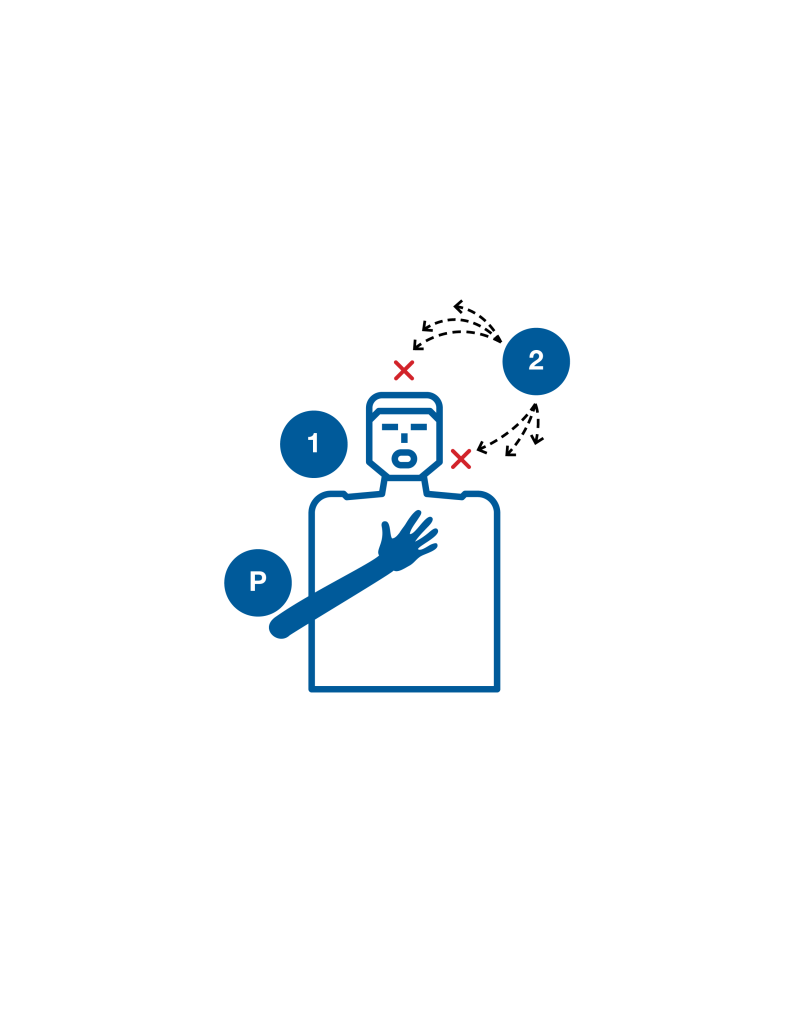For lifeguards, readiness is having proficiency in all land and water rescue skills, quickness in identifying a threat and acting on it, then explaining the situation, what resources are need, and what is being done.
Simply put, lifeguards save lives. A well-trained solo lifeguard is formidable; a well-trained lifeguard pair is unstoppable. The drills below should cover the three main land skills lifeguards should prioritize: ventilations, CPR and AED use.
VENTILATE/DEMONSTRATE DRILL: An adult/child manikin and an infant manikin are set, with one in the 10 o’clock position and the other at 2 o’clock. Both have their heads extending out, and a proctor is positioned at the base of the manikins. Rescuer 1 is at 12 o’clock between the manikins and assisting with ventilations on one lateral side of each manikin. Rescuer 2 assists with ventilations from the cephalic position and open lateral position on each manikin.
Resuscitation masks and BVMs are used. The proctor monitors that each ventilation effectively makes the chest rise.
Objective: Each lifeguard provides four effective ventilations (one every 5 seconds) on the adult manikin with a resuscitation mask. Ventilations are sequential: One by Rescuer 1, followed by one by Rescuer 2, repeated until they reach eight effective ventilations.
Rescuer 1 remains in the one lateral position for all four ventilations. Rescuer 2 alternates ventilating from the cephalic and lateral positions (two ventilations in each position, transitioning from cephalic to lateral when Rescuer 1 is ventilating.) The proctor should monitor that the ventilations are effective and consistent, providing uninterrupted care. Once the pair is proficient on the adult manikin, include the infant manikin for eight ventilations, for a total of 16 ventilations.
Once the pair is proficient at both adult and infant ventilations, incorporate these variations:
• Change the adult manikin rate of ventilations to a child rate;
• Change resuscitation mask and use BVM;
• Maintain an open airway on the manikin (currently being ventilated) throughout the drill.
UNSINKABLE CPR DRILL: An adult and infant manikin are needed, along with the appropriate BVMs and resuscitation masks.
Objective: Rescuer 1 provides uninterrupted effective care to victim while Rescuer 2 provides support in tasks and challenges Rescuer 1 faces (activating EMS via phone or radio if needed, BVM assembly, and AED set-up and facilitation) for 10 cycles, roughly 4 minutes. Proctor quality-assures effective compressions and ventilations by Rescuer 1 and all tasks done by Rescuer 2.
Here is a sequence of five scenarios with increasing difficulty:
Scenario 1: EMS has been activated, Rescuers 1 and 2 arrive to provide primary assessment, then CPR with resuscitation masks for 10 cycles. Rescuers switch positions after five cycles.
Scenario 2: EMS is activated. Rescuers 1 and 2 arrive to provide primary assessment followed by CPR. Compressions and ventilations are provided by Rescuer 1. Resuscitation masks are used for ventilations until a BVM is assembled by Rescuer 2. Once BVM is ready, Rescuer 2 takes over ventilations, with Rescuer 1 sealing masking and maintaining airway. CPR is done for 10 cycles. Rescuers switch positions after five cycles.
Scenario 3: EMS is activated. Rescuers 1 and 2 arrive to provide primary assessment followed by CPR. Compressions and ventilations are provided by Rescuer 1. Resuscitation masks are used for ventilations until BVM has been assembled by Rescuer 2. AED set up with application of AED pads will be priority for Rescuer 2, followed with BVM assembly. Once AED is ready to analyze, Rescuer 2 follows the AED’s prompts. The AED prompts for a shock, followed with five cycles. Once BVM is ready, Rescuer 2 takes over ventilations with Rescuer 1 sealing the mask and maintaining the airway. CPR will be done for 10 cycles. Rescuers switch positions after 5 cycles.
Scenario 4: Rescuer 2 leaves and activates EMS, forcing Rescuer 1 to perform primary assessment, followed with 10 cycles of CPR on a dry adult victim.
Scenario 5: Rescuer 2 activates EMS via a radio/mobile phone, forcing Rescuer 1 to perform primary assessment followed with 10 cycles of CPR on a dry adult victim. Rescuer 2 calls 911 and states their name, occupation, facility name and address, location of victim within facility, nature of incident, treatment being provided to victim, and the best entrance for emergency vehicles to use. The proctor plays EMS dispatcher and requests all information listed above from Rescuer 2. The scenario does not move forward until all information is given. Once all information is provided, EMS dispatch requests Rescuer 2 to meet the emergency vehicle at the entrance.
Once the pair is proficient on all scenarios, use these variations to increase difficulty:
• Child or infant manikin is substituted;
• Victim must be pulled from the water;
• Include obstructed airway or victim vomits (or requirement for suction);
• BVM or resuscitation mask gets clogged due to vomit and needs to be changed out.
AED PAD DRILL: A child manikin is used along with an AED, BVM and resuscitation masks.
Objective: Rescuers must apply AED pads while continuing to provide uninterrupted two-rescuer child CPR (cycles of 15 compressions, two ventilations). Victim is small enough that one AED pad must be placed on chest and one on the back. Drill must be completed within first cycle of CPR.
Once the pair has become proficient, use these variations to increase the difficulty:
• Infant manikin is substituted in;
• Drill starts from beginning, Rescuers 1 and 2 size up scene, conduct a primary assessment, provide CPR with AED set-up and ventilations with a resuscitation mask;
• Drill starts from beginning, Rescuers 1 and 2 size up scene, conduct a primary assessment, provide CPR with AED set-up and ventilations with a BVM.
With patience, practice and great communication, your lifeguards’ ability to work together swiftly and efficiently will save a life. Good luck and keep training.
